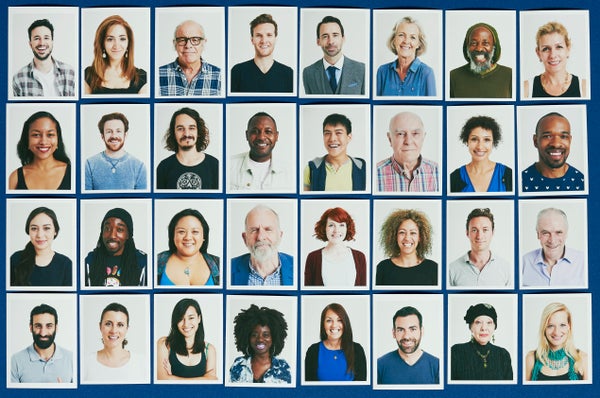From the ancient Greeks to Shakespeare to Hollywood, humans have attempted to understand their fellow man through labeling and categorization. There was Hippocrates’s blood, phlegm, yellow and black bile; the classic dramatic archetypes of hero, ingenue, jester and wise man; and, of course, Carrie, Charlotte, Samantha and Miranda from the famous HBO series
More rigorously, psychologists have worked to develop empirical tests that assess core aspects of personality. The “Big Five” traits (extroversion, neuroticism, openness, conscientiousness and agreeableness) emerged in the 1940s through studies of the English language for descriptive terms. Those categories were validated in the 1990s as a scientifically backed way to evaluate a person’s character.
Through a series of questions, researchers learn whether you are high, low, or in between in each one of those qualities. For example, a person could be low in extraversion, high in conscientiousness and openness, and medium in neuroticism and agreeableness. The combination of where you fall on the spectrum of the five traits provides a window into your general disposition and potentially your future behavior. Different combinations of trait scores could indicate aptitude for a particular kind of job, the strength of interpersonal relationships and even the likelihood of developing psychological or physical health issues.
On supporting science journalism
If you're enjoying this article, consider supporting our award-winning journalism by subscribing. By purchasing a subscription you are helping to ensure the future of impactful stories about the discoveries and ideas shaping our world today.
In theory, these traits are a continuum with thousands of permutations of scores that make up unique personalities. But new research published in Nature Human Behavior simplifies this classification process by identifying trait scores common to many individuals. The researchers believe these groupings reflect a set of prototypical personality types, which they’ve labeled role model, self-centered, reserved or the rather uninspiring “average.” The study is not the first attempt to create subgroups of Big Five traits, but it is the largest and most statistically rigorous effort to identify personality types. “The concept of these personality types has been very debated in the last 20 years. Many people…believed for a long time that [we] don't have enough empirical evidence [to show] that something like this really exists,” says Martin Gerlach, a postdoctoral fellow at Northwestern University and first author on the paper. “Having this much data, in total more than 1.5 million people from these newly available data sets, we could actually show that in fact there is robust evidence for at least four personality types.”
The researchers, most of them engineers, borrowed methods developed to study particle physics to analyze the responses of 1.5 million people from four separate studies measuring the Big Five. Using machine-learning algorithms, they scanned the first data set of nearly 150,000 responses looking for clusters of people who scored similarly on the five traits. The algorithms initially identified 13 clusters, which the researchers then narrowed down to the four densest pockets that encompassed a higher than average number of people. When they applied their algorithms to the other three data sets, the same four clusters emerged, confirming the status of those trait scores as distinct personality types.
Interestingly, age and gender were strongly related to several of the types. The “role model” (low in neuroticism and high in openness, agreeableness, extroversion and conscientiousness) consisted mostly of women over the age of 40 whereas young men were much more likely to be “self-centered” (high extroversion, medium neuroticism, along with low openness, agreeableness and conscientiousness). The majority of people, though, landed into the average category, with high neuroticism and extraversion, low openness, and medium agreeableness and conscientiousness.
It may be premature to change your dating profile to announce your new type just yet, though. “To say that you are a this or a that, that’s a mistake,” says William Revelle, also at Northwestern and the lone psychologist on the study. “What we’re saying is you can group more people in these four clusters than you’d expect by chance. People are fairly continuously distributed throughout the space, there are just higher densities in parts of the space.”
Revelle likened the types to the location and population of cities. More people live in New York, Chicago, Los Angeles and Houston than anywhere else in the country, but most of the country doesn’t live in any of those cities. And although you can easily lump someone in Newark into New York, a person in Pittsburgh is harder to classify because they are equally close to New York and Chicago.
The question remains, then, if these classifications provide any real insight into a person’s thoughts and behaviors. “This is by far the most valid estimate we have of how people cluster into types,” says Richard Robins, a personality researcher at the University of California, Davis, who was not involved in the study. “But whether those clusters, the four clusters they found, reflect some true underlying reality about people is something that requires other forms of evidence.”
In theory personality typing reveals how different sets of traits work together to create an integrated whole. A specific type is also easier to communicate than a list of five different dimensions. Robins cautions, though, there is a risk of “arbitrarily drawing a circle around a particular cluster of people, but there’s no meaningful underlying neurobiological underpinning to why those people are clustered together.”
Revelle agrees. “Breaking it down into one of four types would not allow me to understand you very well,” he says. “If I want to know what you’re like, I need to know how able you are to do something, how stable you are, how interested you are in things. I need to know all of that to predict or understand what you’re going to do.”
Whereas this new research does not settle the question of the validity of personality typing, for the moment the field of psychology does have two definitive categories: those who believe in personality types and those who don’t.
